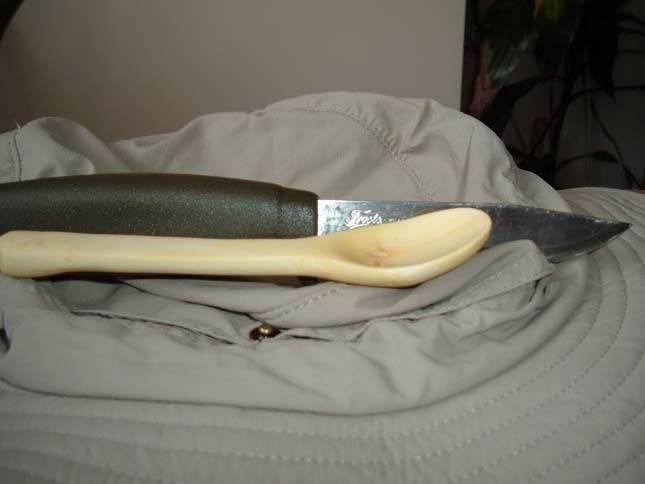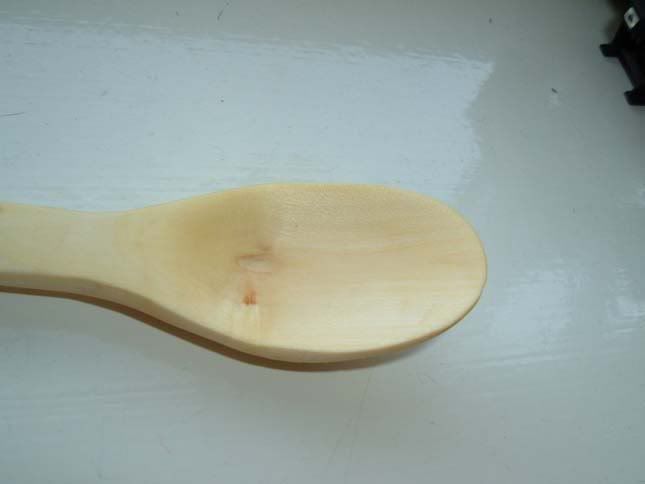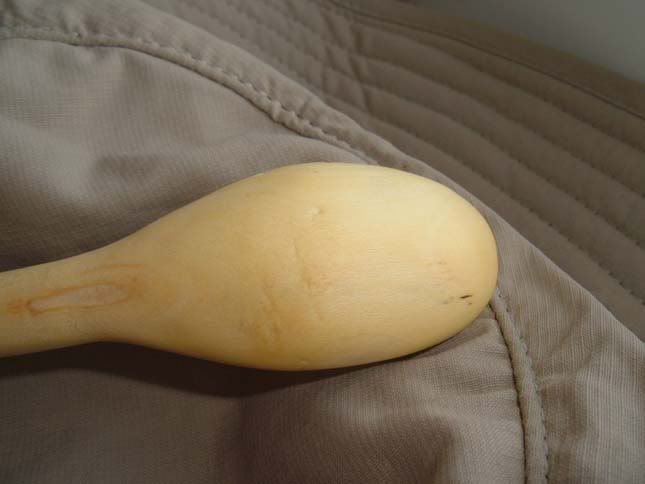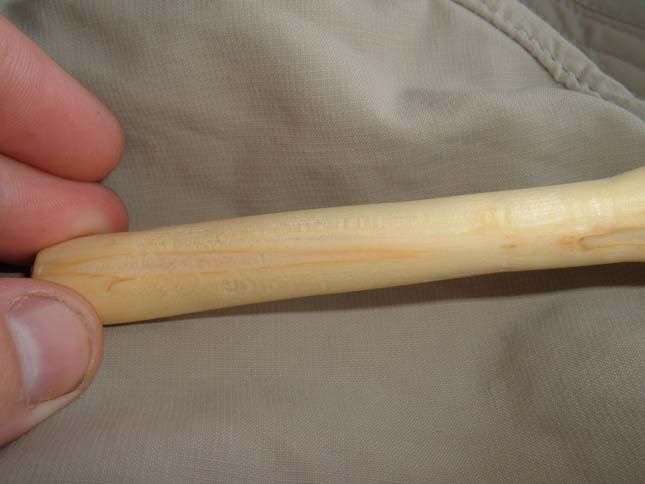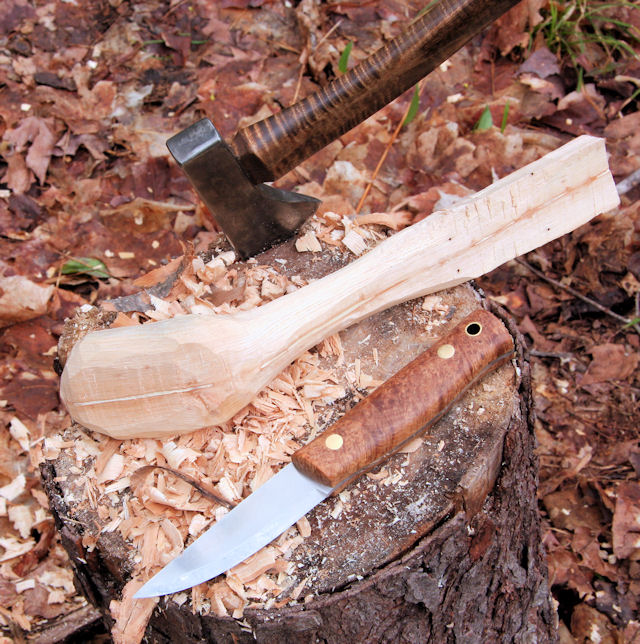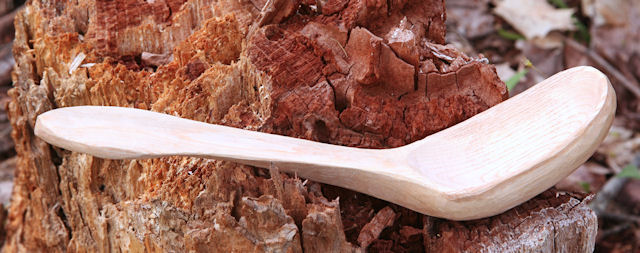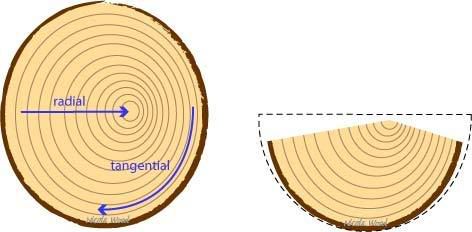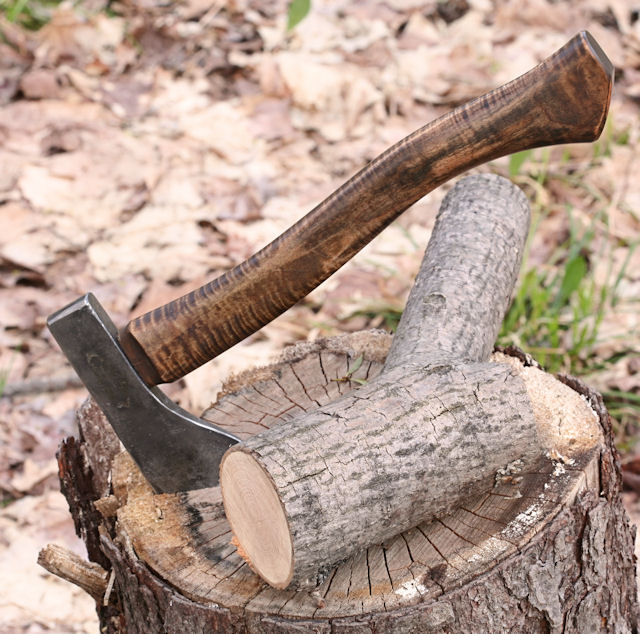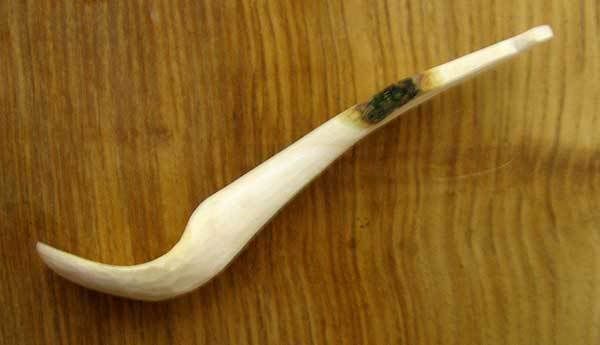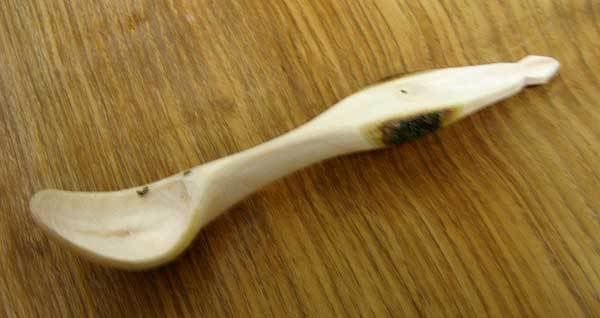I've just been writing and drawing about this for our teaching resources, so thought I'd share with you too...
Wood shrinks as it dries, but this shrinkage is not even; tangential shrinkage (around the log) is far greater than radial shrinkage (across the log):
The stress caused by this is greatest at the centre of the log (the pith) and if left in the round often causes star-shaped splits from the pith outwards. You can relieve some of this tension by splitting the log in half - as a result it will shrink down more at the sides than the middle. It is still advisable to axe away the pith as it may still split. If you cut your spoons with the bowl facing the centre of the log they will shrink down more at the sides than the middle, making them shallower. We always cut ours with the bowl facing the bark so they get deeper as they dry:
Spoons cut from half a log have the added advantage of longer grain at the points of stress; the tip of the bowl where youll scrape your soup bowl or pan, and the most fragile point where the bowl joins the handle:
Wood is prone to splitting along the grain which is handy when you want to split up a larger log, but not in your finished piece where short grain will make them very weak. If you want to make a big ladle like this you are best finding a curved piece of wood to cut it from.
I hope that's of interest!
Nicola

